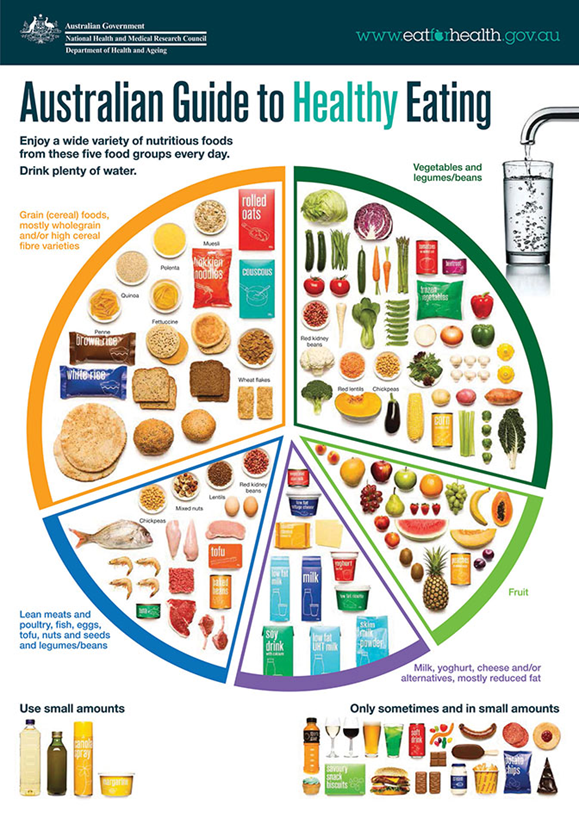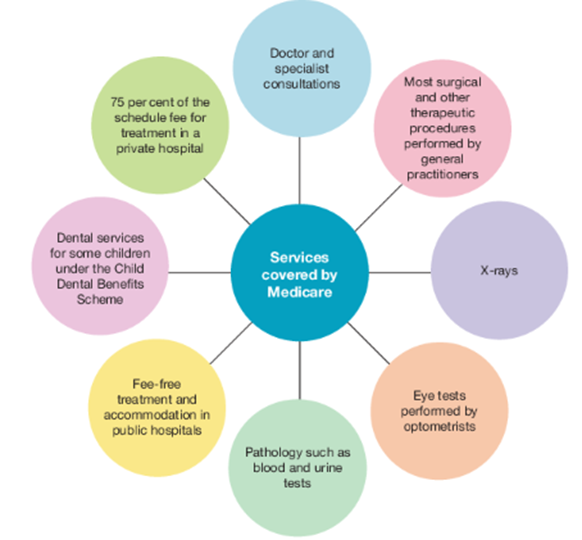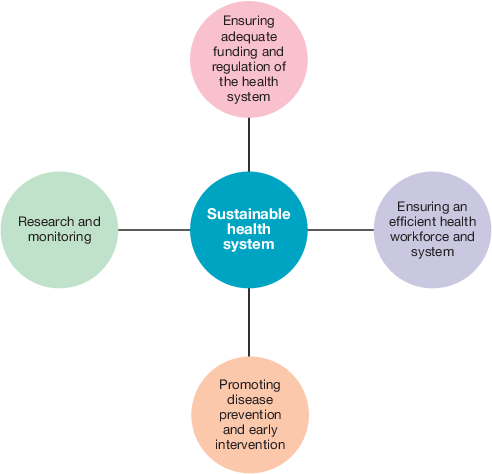HHD - Chapter 6 + 7 Flashcards
1/25
Earn XP
Description and Tags
The role of health promotion in improving population health
Name | Mastery | Learn | Test | Matching | Spaced |
|---|
No study sessions yet.
26 Terms
Why is Social Health Initiatives important?
They contribute significantly to the burden of disease in Australia.
They incur substantial economic costs through health care, absenteeism, loss of productivity and social security payments.
They are associated with considerable social impacts, such as avoidable deaths and inequalities between population groups.
They all have a modifiable component and, if addressed, significant improvements can be made.
The Ottawa Charter for Health Promotion Action Areas
Build healthy public policy
Create supportive environments
Strengthen community action
Develop personal skills
Reorient health services.
Social Justice + Principles of Social Justice
Social justice relates to fairness within society and is based on the following principles:
human rights — Human rights relate to the freedoms and conditions that every person is entitled to, regardless of factors such as race, religion, gender identity, sexual orientation, age and sex. Governments must work to ensure that all people have their human rights protected, respected and promoted.
access — All people must have adequate access to the resources and opportunities they need to thrive, including food, safe water, shelter, education, employment, income and health care, and to participate in the decisions that affect their lives, such as if and when they get married or have children, or the sorts of jobs they do.
participation — Everyone in society has the opportunity to participate in their community and have their voice represented.
equity — Disadvantaged individuals and groups need to have their specific challenges addressed, so they can achieve the same level of health and wellbeing as others in the population. In this sense, equity relates to providing more support for those who need it.
Examples of health inequalities experienced by Aboriginal and Torres Strait Islander Peoples include:
life expectancy about 8.5 years less than other Australians
higher mortality rates in each age group
twice as likely to have a severe profound disability
twice the rate of low birth weight babies and infant mortality than the rest of the population
half as likely to rate health status as excellent or very good
burden of disease rates 2.3 times higher than the non-Indigenous population
injury death rates two times higher than that experienced by non-Indigenous people
higher rates of chronic conditions including cancer, respiratory disease (including asthma) and cardiovascular disease
high or very high levels of psychological distress experienced at three times the rate of the non-Indigenous population
diabetes/high glucose rates around 3.5 times higher than the rest of the population
chronic kidney disease rates nearly four times higher than the rest of the population
higher rates of STIs.
Considerations in evaluating programs for Aboriginal and Strait Islander Peoples
actual improvements in health outcomes that have been made as a result of the initiative — Effective initiatives conduct research to determine the level of success achieved. This information can provide evidence for the actual successes of the initiative and the improvements to health outcomes that have been achieved.
the number of people who have accessed or been involved in the initiative — Many programs keep records on the number of people taking part. An increase in participants over time and/or participants taking part over an extended period can indicate that the target audience is engaged with the initiative, assisting in achieving its goals.
feedback provided by participants — Those taking part in the program often provide information about their personal experiences, which can indicate the level of success in promoting Aboriginal and Torres Strait Islander health outcomes.
action areas of the Ottawa Charter that are evident in the initiative, including:
develop personal skills through the provision of education — Education is a resource that people can use to promote their health and wellbeing long after the program finishes.
strengthen community action by the involvement of various stakeholders and other concerned groups in the planning and implementation of the initiative — When various stakeholders are involved in the planning or implementation of the program, each can bring their strengths and expertise, contributing to the success of the program.
whether the initiative is culturally appropriate for Aboriginal and Torres Strait Islander Peoples, including the consultation, use and training of Aboriginal and Torres Strait Islander personnel in planning and delivering the program — culture is a strong influence in the lives of many Aboriginal and Torres Strait Islander people. Ensuring interventions are culturally appropriate can assist in increasing participation in the program and improved health and wellbeing outcomes.
whether the initiative has taken the specific needs of the target group into account, including the specific needs relating to health outcomes for Aboriginal and Torres Strait Islander Peoples — the most significant gains in health outcomes occur when the areas requiring the most attention are the focus.
funding that has been provided to implement the initiative — most interventions require some sort of financial support to ensure they are planned and implemented appropriately. The provision of adequate funding therefore assists the intervention in achieving its goals.
whether the initiative addresses a significant health issue for Aboriginal and Torres Strait Islander Peoples and why it is important to address this issue. For example, food intake is a key contributor to negative health outcomes for many Aboriginal and Torres Strait Islander people. Focusing on this factor can therefore contribute to significant improvements in Aboriginal and Torres Strait Islander Peoples' health outcomes.

Healthy eating
is associated with lower rates of disease and improved health outcomes. Inadequate food intake has emerged as a key factor contributing considerably to the burden of disease in Australia, particularly related to obesity, cardiovascular disease, some cancers and type 2 diabetes. The prevalence of these conditions is high and is predicted to increase if food behaviours are not modified among many Australians.
Federal government initiatives to promote healthy eating

Considerations that can be included when evaluating health eating initiatives include:
ease of understanding — Visual guides can be useful for those with lower levels of literacy. Resources available in a range of languages can also reach linguistically diverse populations.
access — Being able to access resources free of charge removes financial barriers for individuals and groups. Accessing resources online can remove geographical barriers.
inclusiveness — This relates to all groups within Australia being able to benefit from the initiative. For example, the Australian population consists of a diverse range of cultures and these need to be taken into account to ensure maximum reach.
relevance — Initiatives should work towards a significant need of the community. They should also work towards their stated objectives.
effectiveness — This is the degree to which the program achieves or is expected to achieve its objectives across all population groups
sustainability — This relates to the impacts of the program being able to continue into the future.
The Australian dietary guidelines
Guideline 1: To achieve and maintain a healthy weight, be physically active and choose amounts of nutritious food and drinks to meet your energy needs.
Guideline 2: Enjoy a wide variety of nutritious foods from the following five groups every day and drink plenty of water.
Guideline 3: Limit intake of foods containing saturated fat, added salt, added sugars and alcohol.
Guideline 4: Encourage, support and promote breastfeeding.
Guideline 5: Care for your food; prepare and store it safely.
The Australian Dietary Guidelines
Is a food selection tool incorporated into the Australian Dietary Guidelines. It is intended to be used by consumers to assist them in planning, selecting and consuming adequate proportions of foods from the five food groups. The Australian Guide to Healthy Eating is a visual tool that reflects the recommended dietary advice detailed in Australian Dietary Guidelines 2 and 3.
Shows a circle divided into five wedges, each representing one of the five food groups, representing Guideline 2. The size of each wedge reflects the proportion of each food group that should be consumed on a daily basis.

Aboriginal and Torres strait islander guide to healthy eating
Like the Australian Dietary Guidelines, the Australian and Aboriginal and Torres Strait Islander Guides to Healthy Eating have a number of strengths and limitations that can be used to evaluate the impact of initiatives to promote healthy eating in Australia.

Medicare
Is Australia’s universal health insurance scheme. Established in 1984 and administered by the federal government, Medicare gives all Australians, permanent residents and people from countries with a reciprocal agreement (New Zealand, the United Kingdom, the Republic of Ireland, Belgium, Sweden, the Netherlands, Finland, Italy, Malta, Slovenia and Norway) access to subsidised health care.
Medicare Safety Net
Provides extra financial assistance for those that incur significant out-of-pocket costs for Medicare services. Once an individual or family has contributed a certain amount out of their own pocket to Medicare services in a calendar year ($560.40 in 2024), further financial support is provided by the government, making Medicare services cheaper for the remainder of that year.
How is Medicare funded?
Medicare is funded through three sources of income:
the Medicare levy
the Medicare levy surcharge
general taxation.
Services covered by Medicare

Advantages and Disadvantages of Medicare

Pharmaceuticals benefits scheme (PBS)
The Pharmaceutical Benefits Scheme (PBS) is an Australian government program that subsidises the cost of many prescription medicines.
It ensures all Australians have access to essential medications at an affordable price, helping to improve health outcomes and reduce financial barriers to treatment.
The National Disability Insurance Scheme
The NDIS is a national insurance scheme that provides services and support for people with permanent, significant disabilities, and their families and carers. Funded by the federal and state/territory governments, the NDIS works to assist individuals with permanent and significant disabilities to live an ordinary life.
Assistive technology
a device, system or design that allows an individual to perform a task that they would otherwise be unable to do, or increase the ease and safety with which a task can be performed
Through the individualised plan, the NDIS assists participants to:
access mainstream services and supports — These are the services available for all Australians from people such as doctors or teachers through the health and education systems.
access community services and supports — These are activities and services available to everyone in a community, such as sports clubs, community groups, libraries or charities.
maintain informal support arrangements — This is the help that people get from their family and friends. It is support people don’t pay for and is generally part of most people’s lives.
receive reasonable and necessary funded supports — is provided for assistive technology such as a mobility cane, nonslip bathmat, talking watch, shower stool/chair, over-toilet frame, bed rails and wheelchairs. Funding is also provided to pay for carers if the individual requires assistance with daily tasks.

Private health insurance
Private health insurance is a type of insurance under which members pay a premium (or fee) in return for payment towards health-related costs not covered by Medicare.
Incentives
In order to ease the pressure on the public health system, the government has introduced incentives to encourage people to get private health insurance

Funding to the health system
Relates to the financial resources that are provided to keep the health system adequately staffed and resourced so a high level of care is available for those who need it.
Also relates to the money used to pay for services and resources provided by the health system to patients, such as doctors consultations, subsidies for medication, supports provided through the NDIS, and contributions for health services made by private health insurance companies.
Sustainability to the health system
Relates to its capacity to provide a workforce and infrastructure, such as facilities and equipment, into the future, and to be innovative and responsive to emerging needs through interventions such as research and monitoring.

Access to the health system
An accessible health system is one that can provide all people with timely access to quality health services based on their needs, not their ability to pay, regardless of where they live in the country. This means that access must be available to people from all socioeconomic groups and those living within and outside Australia’s major cities.
Equity
An equitable health system is one that takes the different circumstances of individuals and groups into account, so that those who need more support are able to receive it. As a result, disadvantaged individuals and groups are targeted in an attempt to create a level playing field.